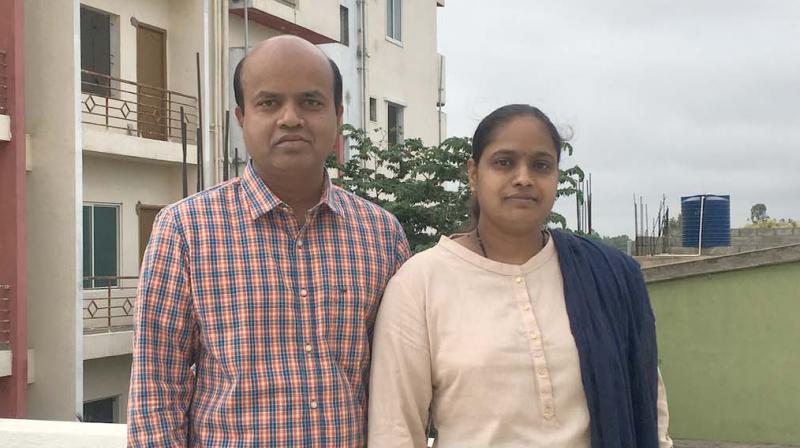‘No tankers,’ says man with a meter metier
The device he devised gives readings on the amount of water consumed, which helps in reducing consumption over a period of time.

To see water tankers supplying water by the litres to large apartment complexes has become quite the norm in Bengaluru. This is due to the water woes that have been cropping up across the city. And if you’re entirely dependent on these tankers for your water needs, you must certainly be emptying out your pockets. To curb the amount their family of four was spending on water on a weekly basis, husband-wife duo — Vaishali and Chinnayya Math - came up with a unique water-tracking device that promises to change the way people consume water in the city.
The device he devised gives readings on the amount of water consumed, which helps in reducing consumption over a period of time. Talking about his meter, he says, “The existing conventional water system will become smarter. Sitting anywhere in the world, you will get information on the water, level, motor status and also water consumption on your phone,” he shares. What’s surprising is the fact that Chinnayya had this machine up and running within three months. “Getting the hardware was a difficult task as it is impossible to find an Indian manufacturer who builds hardware. Getting the word out was the next challenge. I attended a number of water expos across the country, explaining how the meter works,” he recalls all the legwork he had to put in.
The impetus to do something about the water woes came from Chinnayya’s rural background and upbringing. “Growing up in North Karnataka, the urge to conserve was always there. And water being the most precious commodity, I wanted do something about the problems we are currently facing,” says the man who completed a BE in Electronics and Communication from Gulbarga, and worked with some of the big firms before joining his friend to find a solution to this problem. Chinnayya mentions how his family of four used to consume over five to six tankers a week. He explains, “If you live in Sarjapur, this is something you will face every month. And with no Cauvery or borewell, we were forced to turn towards tankers. While I was paying Rs 3,000 a week for water, my friend’s water bill was just Rs 200.” That’s when I started questioning — ‘why and how is so much water being consumed?’
Chinnayya shares that the feedback that he got was good but people had a lot of questions too. He smiles, “One of the most common questions were - ‘Is my consumption good or bad?’ To answer these frequently asked questions (FAQs), we came out with a social networking platform like Facebook, where you can interact with other users and compare results.” Chinnayya has a number of other projects in the pipeline. He says, “The current working model is designed for tier one and two cities. Now, we are working on a model designed for only rural areas. We will also be adding verbal data analytics that will read out your reading. There is also a plan to give the government live consumption of water based on pincode, city, etc,” he concludes.

